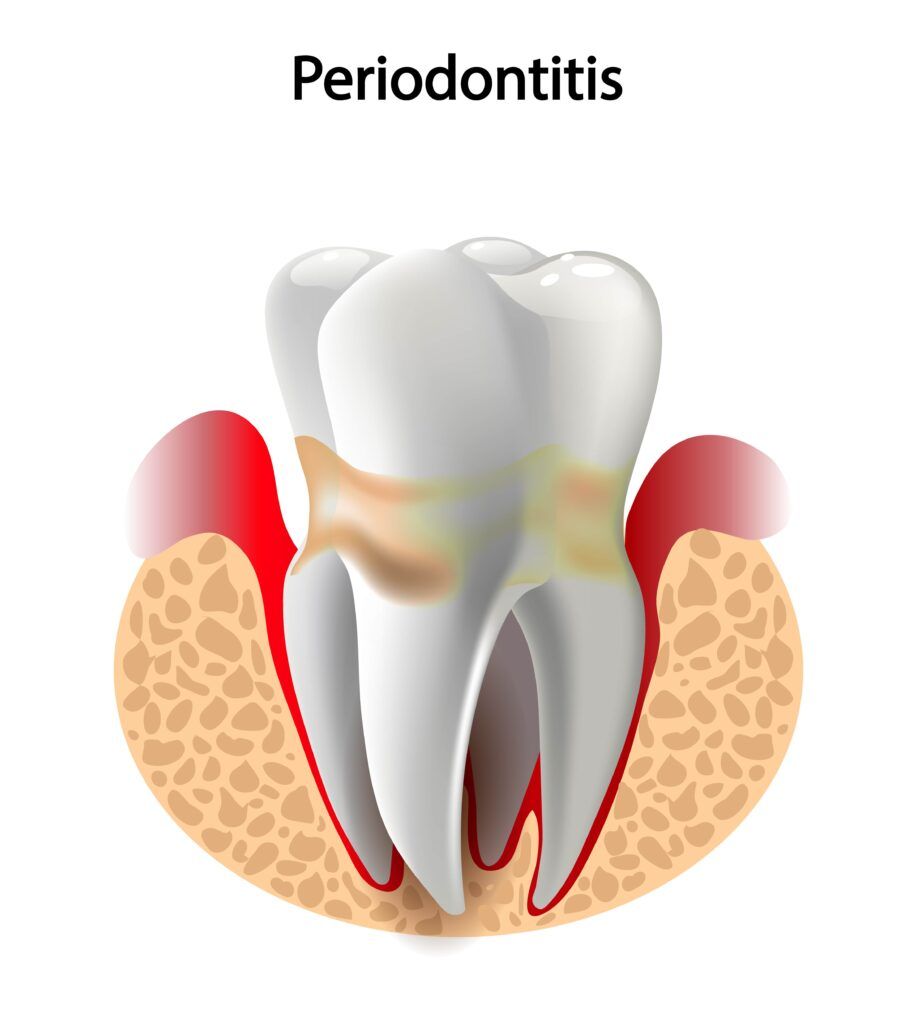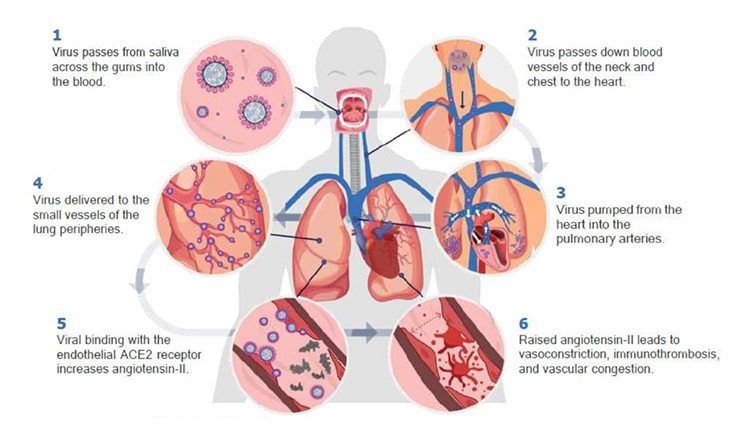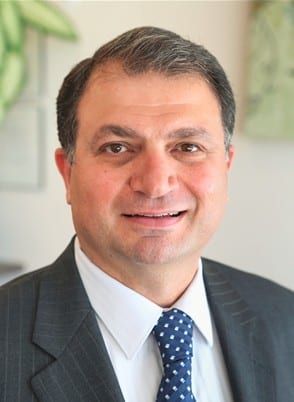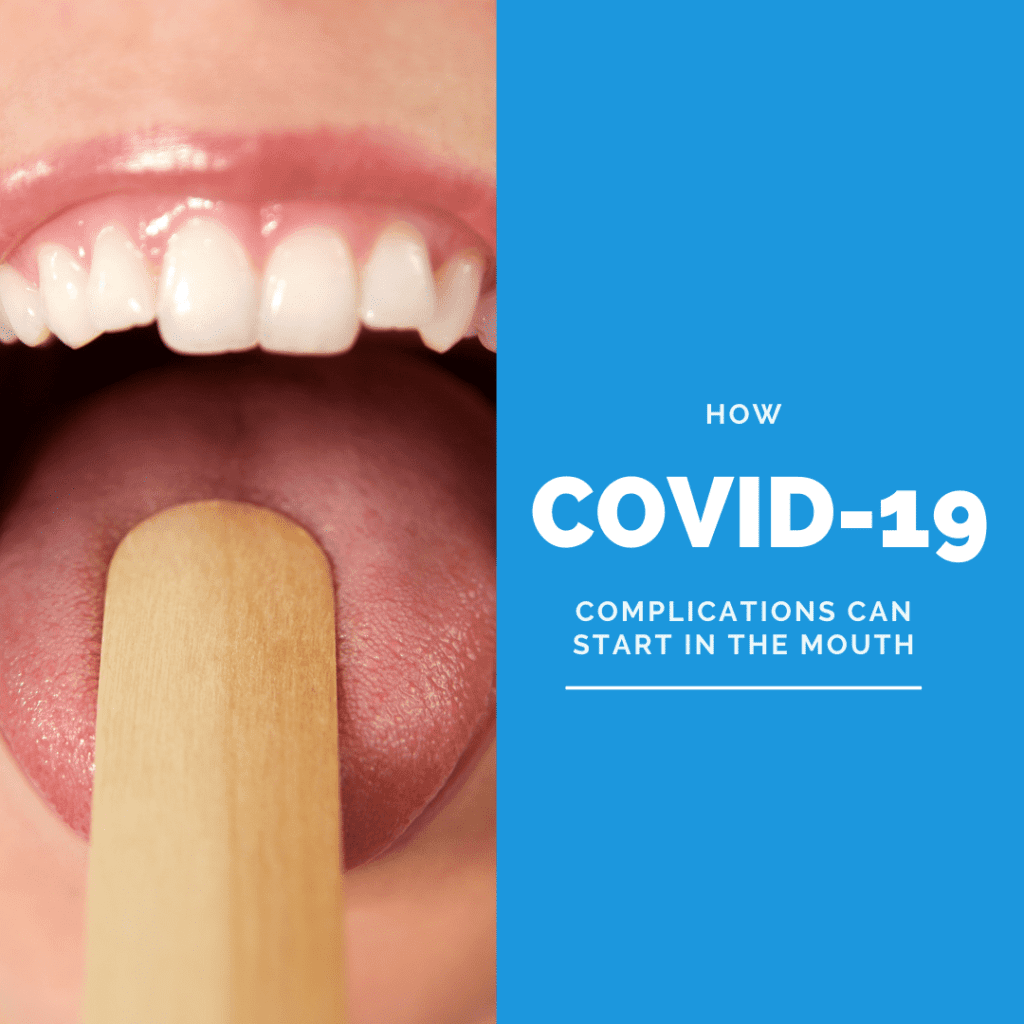Throughout the duration of the COVID-19 pandemic, researchers have been working to learn as much as possible about this novel coronavirus. This research has gained a better understanding of the virus, allowing for the development of a vaccine and more effective treatments. While this progress is certainly promising, there is still a lot that researchers don’t know about the virus. For this reason, COVID-19 research continues to shed new insight about the virus.
One recent research article in particular has called into question the theory that the virus enters the lungs through inhalation. Instead, it is now being proposed that the virus actually enters through the mouth and reaches the lungs through the bloodstream. As a second part of this theory, researchers are also suggesting that people with periodontitis are at a higher risk of developing severe COVID-19 lung infections. This new theory is thoroughly discussed in an article titled, The COVID-19 Pathway: A Proposed Oral-Vascular-Pulmonary Route of SARS-CoV-2 Infection and the Importance of Oral Healthcare Measures.
To provide a brief summary, the article starts off by noting that COVID-19 lung infections are not consistent with lung infections caused by an inhaled pathogen. This is because inhaled pathogens cause lung infections that form all over the lungs, while COVID-19 lung infections tend to localize at the base of the lung. Following evidence that suggests the virus reaches the lungs another way, researchers began to look elsewhere.

They eventually found evidence that suggests the SARS-CoV-2 virus can infect various structures in the mouth including the minor salivary glands, tongue, and gum tissue. However, researchers also found that the SARS-CoV-2 virus could survive and replicate in gingival crevicular fluid (GCF). GCF is produced by the mouth in response to inflammation caused by gum disease. Although people with healthy gums can have low levels of GCF, much higher levels are seen in people with periodontitis.
People with periodontitis also have periodontal pockets, which are small gaps between the teeth and gums caused by the gums pulling away from the teeth. These pockets provide an ideal location for plaque and bacteria to accumulate. Since around 64% of COVID positive patients had the virus in their GCF, this also means that the virus can accumulate in these pockets as well.
Dentists are already familiar with what happens when too much bacteria accumulates in the periodontal pockets. In addition to causing jawbone deterioration, excess bacteria can eventually overwhelm the mouth’s immune defenses and allow the bacteria to pass into the bloodstream. This is why periodontitis is often associated with other complications such as respiratory infections, endocarditis, and pregnancy complications.

Researchers are now postulating that the SARS-CoV-2 virus can enter the bloodstream in the same way after accumulating in the periodontal pockets. Once inside the bloodstream, the virus will be circulated down through the veins of the head and neck into the heart, where it will then be pumped into the lungs. At this point, researchers note that the virus can cause various complications.
It is also hypothesized that people with periodontitis are more likely to experience complications of the COVID-19 infection. Data has indicated that COVID patients with periodontitis are more likely to be admitted to intensive care units or require ventilation. The death rate is also higher for COVID patients with periodontitis. For these reasons, researchers are recommending that people practice good oral hygiene as a way to decrease the risk of COVID complications. This includes regular brushing, flossing, and dental exams to ensure one’s oral health is properly maintained.

Dr. Sarmad Channo, a Rochester, MI dentist, received his doctorate degree from New York University Dental School. Since then, he has continued studying to broaden his expertise and has also graduated from Progressive Orthodontic Seminars with the highest of honors. Dr. Channo has also served as an instructor for both the McGann Postgraduate School of Dentistry and Progressive Orthodontic Seminars.

